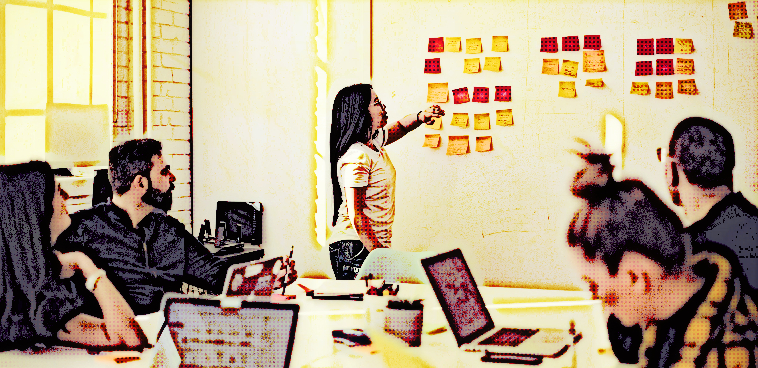In countless conversations with entrepreneurs and change-makers, I’ve never heard of a groundbreaking idea that came from a leadership workshop or brainstorming meeting.
Often, the most innovative ideas came from an informal conversation during a flight delay, over a glass of wine or in an office hallway. These settings make it easy and safe to share an idea without judgment or a preset time limit. In contrast, formal brainstorming sessions have limits and boundaries that often get in the way.
Informal and safe dialogue is essential to activating change. The formality of traditional meetings can shut down exploration in the name of efficiency, but casual conversations aren’t bound by time or agendas — and collaboration is natural.
Think about how songwriters start with a sound, lyric or short melody. Others then add to that creation and build on the original concept. The informal collaboration is expected and ultimately makes a song better. It is a model for how change and new ideas can begin.
To help set the stage for innovative ideas, start with these four steps:
1. Determine how far out you can see
Businesses have traditionally relied on annual planning and budgeting with quarterly project plans. Unfortunately, there were periods last year when organizations could only see three to four weeks ahead — if that. In times of rapid change, align your decision-making with how far out you can anticipate the future. Start moving in the right direction, adjusting as you go.
Get started by identifying the “definites” (i.e., what you know for sure). This could be a budgeting cycle, client launch date, or office reopening plan. Define the knowns and then start agile planning around those. Even in heavy fog, with only your headlights to guide you 10 feet at a time, you can still reach your destination.
2. Find options and experiment
Making quick decisions can be uncomfortable. Challenge yourself to explore options quickly while experimenting. If you can break a bold idea down into small steps, it’s easier to start and minimize risk. It may feel safer to give yourself permission to try an idea and see where it takes you and your team. In a 2019 Gartner survey, 46% of respondents said their most significant barrier to innovation was the fear of risks. Get your team started by taking small steps and knowing your available options.
3. Course-correct with confidence
If your decisions are directional, expect to course-correct as you learn. Continually ask yourself — and your team — what you’ve learned each week and how it affects your plan. Amazon has a reputation for focusing on processes and metrics, yet the company is also known for innovation. You can do both! Assure your team by making this clear: “We have a plan today, but as soon as we know more and have a better way, we’ll use it.” Change is expected and needed.
4. Commit to collaboration
It can be hard to put your ideas out there for others to change and build upon. You might feel protective of those ideas or fear rejection. But there are benefits in allowing others to build on your first idea; collaboration can increase successful innovation by 15%. When others have an even better idea, embrace it. Stay focused on the outcome rather than who generated the idea.
Brainstorming sessions have their purpose — but don’t assume they will produce the best ideas or spark necessary changes. When you invite others to share ideas from their conversations, the best ideas will emerge. An informal exchange could end up being your most productive and important moment of the day.
Patti Johnson is the CEO and founder of PeopleResults, a change and organizational development consultancy. She’s also the author of “MakeWaves: Be the One to Start Change at Work and in Life” and the host of the podcast “Be a Wave Maker: Conversations on Change.”
If you enjoyed this article, sign up for SmartBrief’s free e-mails on leadership and business transformation, among more than 200 other free industry-focused newsletters.
